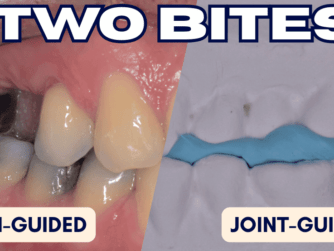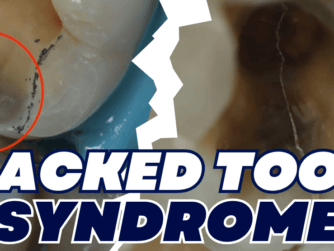Podcast: Play in new window | Download (Duration: 46:16 — 66.8MB)
Subscribe: RSS
When and why should you use post crowns in contemporary Dentistry? Surely they are a thing of the past? Dr. Dominic Hassall, a restorative consultant, shares valuable insights on restorability and the essential concept of ferrule.
He highlights the significance of restorability and the role of fibre posts in dental procedures, emphasising the ferrule effect in crown and onlay preparations. The ferrule effect ensures predictable outcomes by transmitting occlusal forces through the natural tooth structure, reducing the risk of failure.
Protrusive Dental Pearl: How to Bone Sound for Ovate Pontics –
Imagine you have a missing upper lateral incisor, and you want to use an ovate pontic for an aesthetic bridge. To achieve the ideal emergence profile, Jaz demonstrates how to assess gingival thickness using ‘bone sounding’ using a periodontal probe (please see video). This technique helps determine how thick the tissues are overlying the edentulous area and whether an ovate pontic is feasible (or perhaps a connective tissue graft is necessary).
Throughout the episode, Dr. Hassall’s expertise shines through, making it a must-listen for dental professionals seeking a comprehensive understanding of restorability and ferrule in restorative dentistry.
Need to Read it? Check out the Full Episode Transcript below!
Highlights of this episode:
0:25 – Introduction to Dr. Dominic Hassall
1:27 – Bone Sounding Clinical Video
6:25 – Dr. Hassall’s journey into restorative dentistry
9:04 – Function of Post Crowns
13:35 – Composite for Nayyar cores
18:10 – Assessing restorability
23:25 – Impact of ferrule position on treatment outcome
30:30 – Advantages and disadvantages of post techniques
38:55 – Post Crowns as Bridge Abutments?
43:08 – Dr. Hassall’s teaching institute details
Dr Hassall gave a discount for his Diploma Course, head over to https://dominic-hassall-training.co.uk/contemporary-restorative-aesthetic-dentistry-online-blended-course-advanced/ and use the code “JAZ10”
Jaz has no financial interest in this product.
If you enjoyed this episode, check How to Save ‘Hopeless’ Teeth with the Surgical Extrusion Technique







